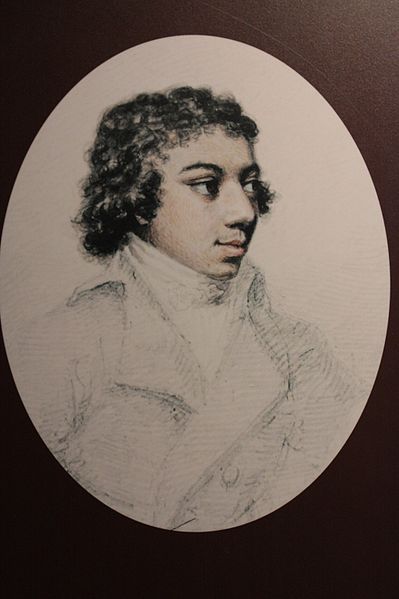
Our Short Takes pop up event shares histories of racial mixing in Britain through four short videos.
Voting for Round 1 is now closed. A Mixed Museum Short Takes video on the winning topic is now being made and will shortly be published on this page. See below for details of Round 1's candidates and the winning vote!
The Mixed Museum's Short Takes event is part of the Our Century centenary programme from the Institute for Historical Research - the UK's national centre for history. The Our Century programe (July 2021 - May 2022) celebrates the discipline and practice of history throughout the UK.
Many thanks to the IHR for supporting this event. To learn more, visit: www.history.ac.uk/whats/our-century or follow the Twitter hashtag #OurCentury
Round 1: Classical musicians
Round 1's theme was classical musicians from British mixed race families or who were long term residents of Britain. The candidates were:

Born to a Black Barbadian father and a white German-Polish mother in 1780, George Bridgetower was a musical prodigy who caused a stir in Europe.
Settling in Britain around the age of 11 under the patronage of the Prince of Wales, Bridgetower would go on to be recognised as an astonishing musical talent, including by Beethoven who originally dedicated the Kreutzer Sonata to him.

The son of a white English mother and a Parsi father, Sorabji was born as Leon Dudley Sorabji in Chingford, Essex in 1892. A self-taught pianist, he was one of the most prolific composers of the twentieth century.
Often feeling an outsider in Britain due being a gay man of mixed racial heritage, he led an increasingly reclusive life in Corfe Castle, Dorset.

Born in 1903, Avril-Coleridge Taylor was the daughter of the famous Black mixed race composer Samuel Coleridge-Taylor and his wife, Jessie.
Showing great musical talent from a young age like her father, Avril made her debut as a conductor at the Royal Albert Hall in 1933 and wrote numerous orchestral works. In 1952, she resided in South Africa for two years where her initially ambivalent views about apartheid changed when she herself was refused work due to her racial heritage.
The winning candidate with 47.5% of the vote was: AVRIL COLERIDGE-TAYLOR!
A short video of Avril's life will shortly be posted on this page. Stay tuned for Round 2 and three new candidates to vote for!

If you would like to share the reason behind your vote or share your thoughts on Short Takes, email us at: info@mixedmuseum.org.uk
Don't miss out on seeing the finished video! Sign up to our newsletter to be notified when Avril's video is published, along with updates of latest news and activities at TMM.
Subscribe to our monthly newsletter to get exhibition highlights and be the first to hear all our news.